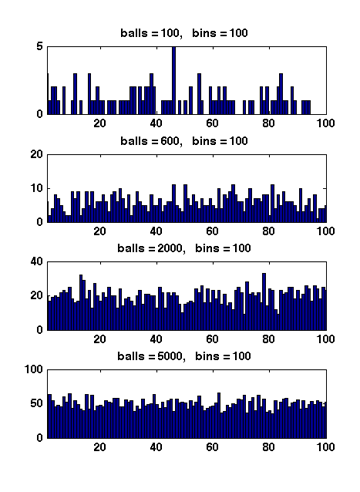随机算法 (Fall 2011)/Balls-into-balls Occupancy Problem
Now we ask about the loads of bins. Assuming that
An easy analysis shows that for every bin
Because there are totally
Therefore, due to the linearity of expectations,
Because for each ball, the bin to which the ball is assigned is uniformly and independently chosen, the distributions of the loads of bins are identical. Thus
Next we analyze the distribution of the maximum load. We show that when
Theorem - Suppose that
- Suppose that
Proof. Let According to Stirling's approximation,

Figure 1 Due to the symmetry. All
When
Therefore,
When
Formally, it can be proved that for